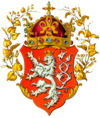
Rudolf I was the first King of Germany from the House of Habsburg. The first of the count-kings of Germany, he reigned from 1273 until his death in 1291.

Ottokar I was Duke of Bohemia periodically beginning in 1192, then acquired the title of King of Bohemia, first in 1198 from Philip of Swabia, later in 1203 from Otto IV of Brunswick and in 1212 from Frederick II. He was an eminent member of the Přemyslid dynasty.

Ottokar II, the Iron and Golden King, was a member of the Přemyslid dynasty who reigned as King of Bohemia from 1253 until his death in 1278. He also held the titles of Margrave of Moravia from 1247, Duke of Austria from 1251, and Duke of Styria from 1260, as well as Duke of Carinthia and landgrave of Carniola from 1269.

Wenceslaus I, called One-Eyed, was King of Bohemia from 1230 to 1253.

The Duchy of Bohemia, also later referred to in English as the Czech Duchy, was a monarchy and a principality of the Holy Roman Empire in Central Europe during the Early and High Middle Ages. It was formed around 870 by Czechs as part of the Great Moravian realm. Bohemia separated from disintegrating Great Moravia after Duke Spytihněv swore fealty to the East Frankish king Arnulf in 895.

Henry Bretislav, a member of the Přemyslid dynasty, was Bishop of Prague from 1182, then Duke of Bohemia as "Bretislav III" from 1193 to his death.
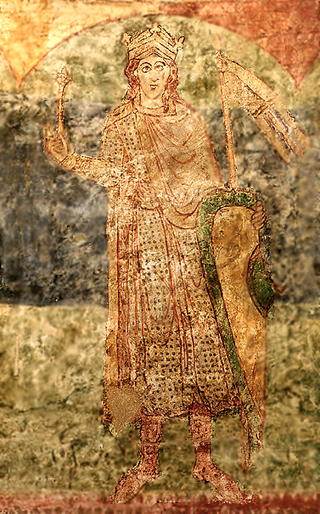
Vratislaus II, the son of Bretislaus I and Judith of Schweinfurt, was the first King of Bohemia as of 15 June 1085, his royal title granted as a lifetime honorific from Holy Roman Emperor Henry IV that did not establish a hereditary monarchy. Before his elevation to the royal dignity, Vratislaus had ruled Bohemia as duke since 1061.

The Golden Bull of Sicily was a decree issued by the King of Sicily and future Emperor Frederick II in Basel on 26 September 1212 that confirmed the royal title obtained by Ottokar I of Bohemia in 1198, declaring him and his heirs kings of Bohemia. The kingship signified the exceptional status of Bohemia within the Holy Roman Empire.
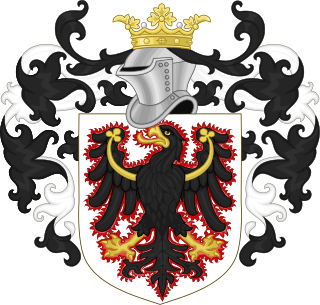
The Přemyslid dynasty or House of Přemysl was a Bohemian royal dynasty that reigned in the Duchy of Bohemia and later Kingdom of Bohemia and Margraviate of Moravia, as well as in parts of Poland, Hungary and Austria.
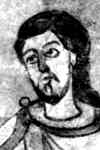
Soběslav I was Duke of Bohemia from 1125 until his death in 1140. He was a member of the Přemyslid dynasty, the youngest son of Vratislaus II, by his third wife Świętosława of Poland.

Frederick, a member of the Přemyslid dynasty, was Duke of Bohemia from 1172 to 1173 and again from 1178 to his death.
Děpold I was the second son of Duke Vladislav I of Bohemia and brother of Duke and later King of Bohemia Vladislav II.
Vladislaus III, also called Vladislaus Henry III, was the margrave of Moravia and duke of Austria from 1246 until 1247.
Otto II, the Rich, a member of the House of Wettin, was Margrave of Meissen from 1156 until his death.
Kunigunde of Hohenstaufen or Kunigunde of Swabia was the third daughter of Philip, Duke of Swabia and his wife, Irene Angelina.

Constance of Hungary was the second Queen consort of Ottokar I of Bohemia.
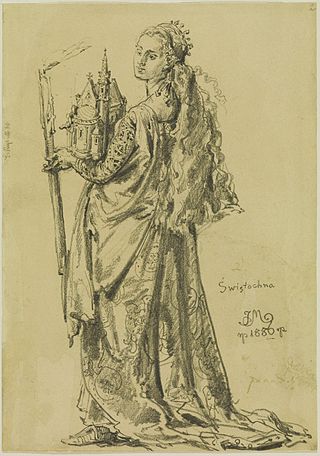
Świętosława of Poland was the third wife of Duke Vratislaus II of Bohemia and the first Queen of Bohemia as of 1085.

Judith of Thuringia, a member of the Ludovingian dynasty, was Queen consort of Bohemia from 1158 until 1172 as the second wife of King Vladislaus II. She was the second Queen of Bohemia after Świętosława of Poland, wife of King Vratislaus II, had received the title in 1085.

Dagmar of Bohemia was Queen of Denmark as the first spouse of King Valdemar II. She was the daughter of King Ottokar I of Bohemia and his first wife, Adelaide of Meissen.
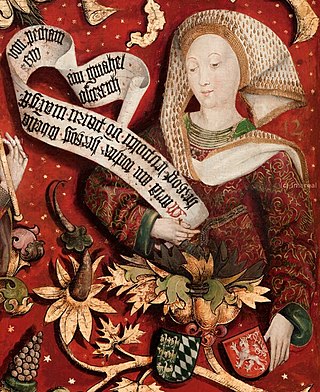
Maria of Bohemia, a member of the Přemyslid dynasty, was Margravine of Austria and Duchess of Bavaria by her first marriage to Duke Leopold I, as well as Margravine of Baden and Verona by her second marriage to Margrave Herman III.


















